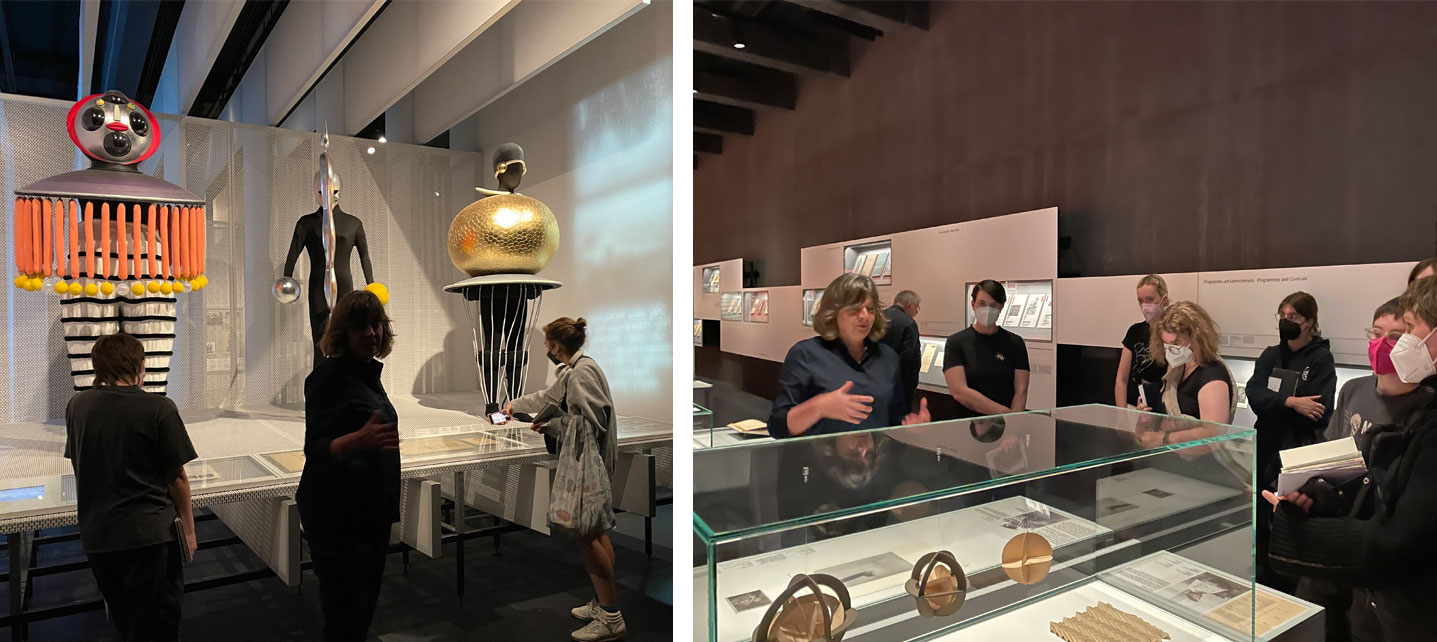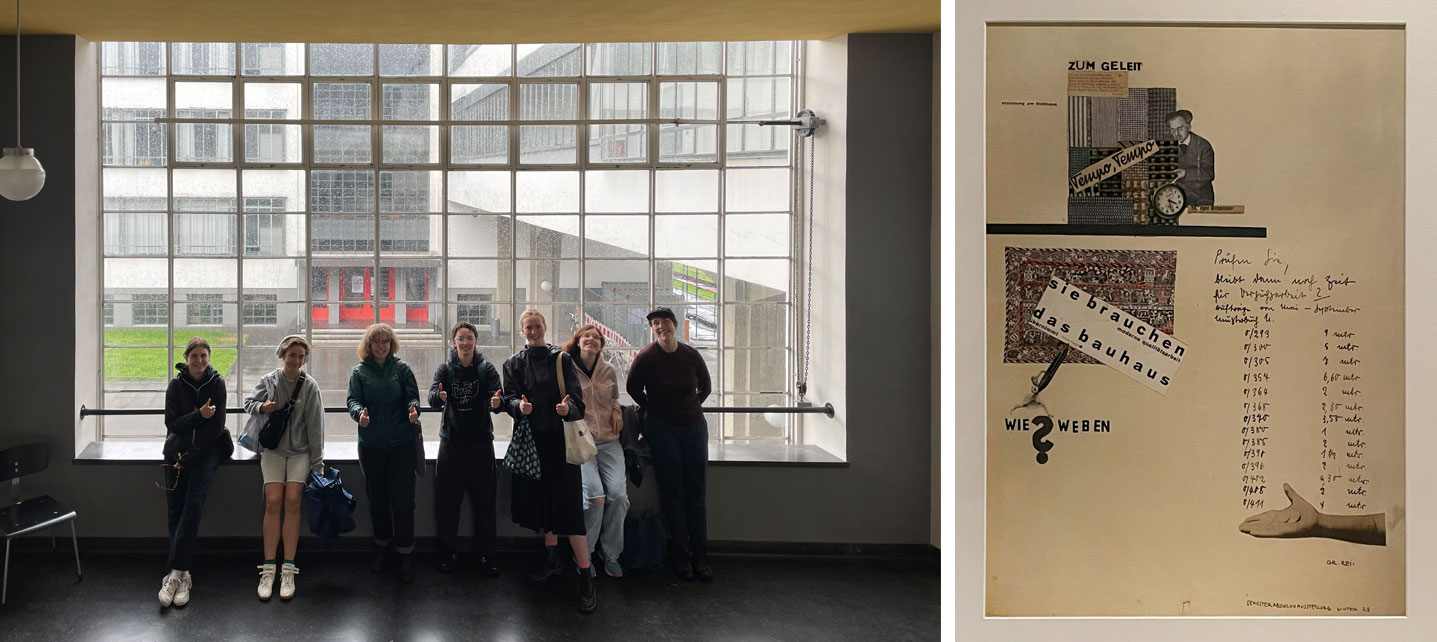tour with regina bittner
Bauhaus Dessau
The field school students took an exciting day trip to Dessau, about 2 hours away from Berlin. As a main part of their visit, they joined a personal tour at the Bauhaus Museum Dessau with Regina Bittner, head of the Academy and Deputy Director of the Bauhaus Dessau Foundation. Bittner provided detailed information about the significance of the Bauhaus, its history and lasting influence as a school and institute for art, architecture and design, a s well as about the people who shaped the school and its infrastructure.
The Bauhaus Museum Dessau opened to the public 2019 and holds the second largest archives collection. It contains various works from students of the institution and upholds the values of the original institution for preservation. There are multiple workshop spaces and auditoriums to continue an institutional way of learning like at the original Bauhaus.
The original Bauhaus was a design and architecture school founded by architect Walter Gropius in 1919 in Weimar, Germany. Until 1934 it faced several relocations and school buildings throughout its 14-year time period; these places included Weimar, Dessau and Berlin. The founding principles of the school were to unite fine arts with applied arts. Architecture was at the core of the Bauhaus, and its aim was to reintegrate art and industrialization and its new social conditions. Due to the rise of the fascist National Socialist Regime the school had to be closed down and many architects from the Bauhaus moved worldwide and spread their learnings, characteristics and styles found at the school. The characteristics of the original Bauhaus architecture consisted less of the decorative embellishments and ornamentation that were seen in other periods of architecture and more of a functional, clean, modernized design. The radically simplified forms, rationality and functionality showcased individual artistic vision while unifying the principles of mass production.
Interestingly, Bittner noted that asymmetry was often favoured over symmetrical design and the use of abstract shapes throughout its decoration and predominantly functional design. This was the focus on embracing new possibilities of modern technologies. The Bauhaus fulfilled both the practical and expressive modes of design and building.

The field school students then began to reflect on Vancouver's building style and found many parallels to the Bauhaus. Vancouver takes a modernist approach to its architecture, particularly in West and North Vancouver housing. It utilizes this form of simplistic abstraction, but having less social sentiment and emotion in its build infrastructure and more on the formalism of precision of lines, angles and geometrics.
